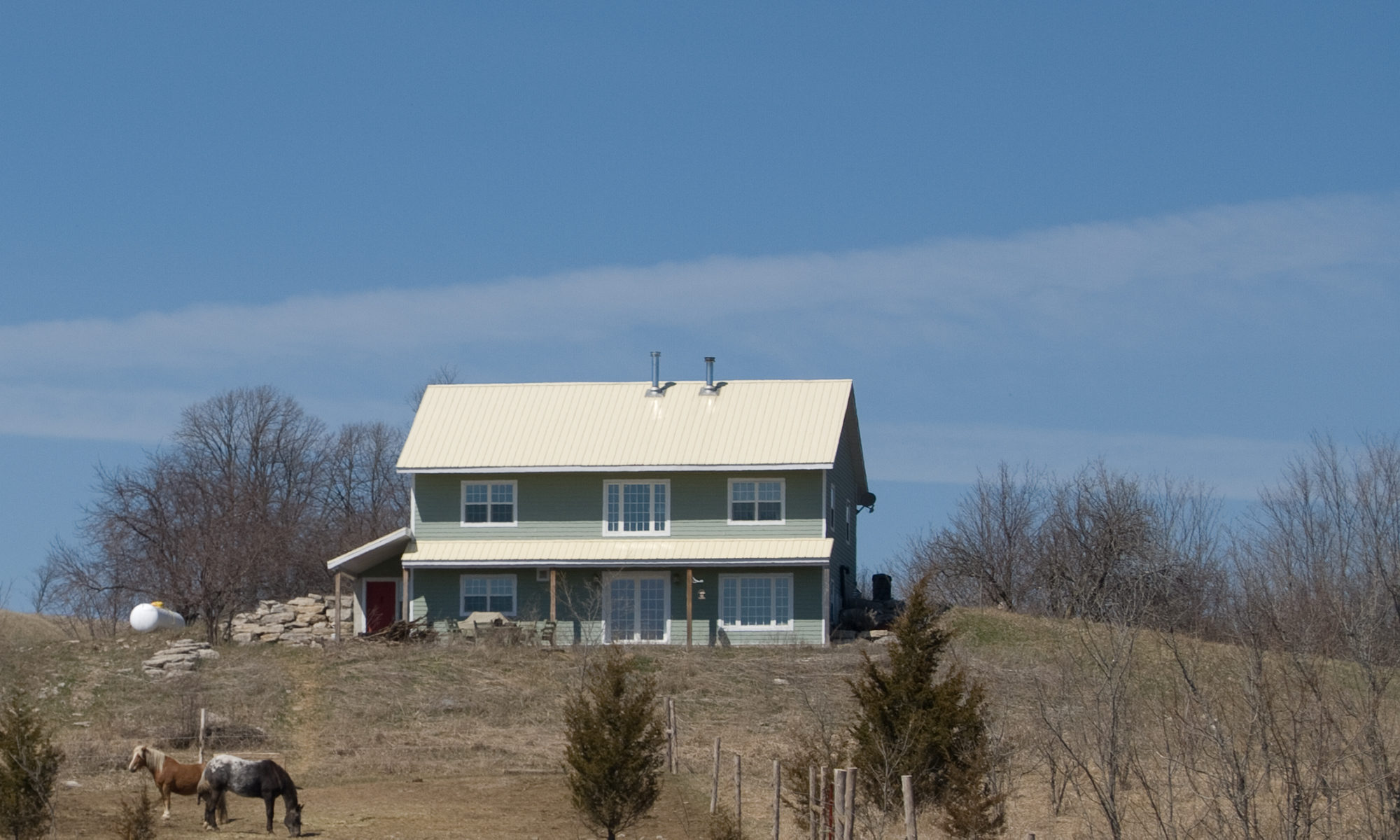I discussed thermal mass briefly in the post about passive solar. Thermal mass is the ability of a material to hold heat and slowly release it back into the environment giving a flywheel effect. All materials have a thermal mass, everything from air to concrete. The thermal mass of a building will store heat that is generated by burning fuel, or is collected from the sun. The thermal mass can either be exposed in the building, such as a mass wall found in a passive solar structure, or can be hidden and the heat is carried to it in an active solar system, such as the hot water tank in a solar hot water collector. The ability to store heat varies from material to material and is known as the specific heat capacity. The following table shows the heat capacity of common building materials along with the density and the heat storage per volume
| Material |
Heat Capacity (J/gK) |
Density (kg/m3 ) |
Heat per volume (MJ/m3K) |
| Water | 4.18 | 1000 | 4.18 |
| Gypsum | 1.09 | 1602 | 1.746 |
| Air | 1.0035 | 1.204 | 0.0012 |
| Concrete | 0.88 | 2371 | 2.086 |
| Brick | 0.84 | 2301 | 2.018 |
| Limestone | 0.84 | 2611 | 2.193 |
| Basalt | 0.84 | 3011 | 2.529 |
| Sand (dry) | 0.835 | 1602 | 1.337 |
| Soil | 0.80 | 1522 | 1.217 |
| Granite | 0.79 | 2691 | 2.125 |
| Wood | 0.42 | 550 | 0.231 |
For a material to be used in a building for thermal mass, you want a good combination of heat capacity and density. As you can see, air has a higher heat capacity than concrete, but due to the low density of air and the high density of concrete, concrete can hold nearly 2000 times as much heat as air. Water has the best heat capacity per volume which is why some passive solar installations have tubes or barrels of water in the building. The problem is that water is a liquid and has a tendency to leak when you don’t want it to. Of the other common materials, concrete has amongst the best heat capacity per volume, is inexpensive and easy to work with. This is why concrete is commonly used as the thermal mass in passive solar buildings.
In a passive solar design, it is preferable to have the thermal mass directly exposed to the sun in order to capture the most heat. A good example of this is to use concrete for a floor or to build a concrete or stone wall close to the windows (generally less than 10 ft) so that it can act as a heat absorber. A common way to do this is is to build a stone fireplace surround or feature wall. A way to add thermal mass to a frame building is to use a double layer of drywall on walls that are exposed to the sun.
One thing to be cautious of when building with thermal mass is to not have too much thermal mass. In some of the early passive solar buildings, large amounts of thermal mass were used in the form of stone and concrete. During the operation of the homes, it was found that the thermal mass would continue to absorb heat all winter, only to release it in the summer. It has also been found that only a portion of the thermal mass is absorbs and released heat during the day, for example with concrete only about the first 4 inches are active so very thick concrete walls can be counter productive. Also remember that if the thermal mass is exposed to the exterior of the house, it should be insulated on the exterior.
A note on the units. J=Joules, K=Kelvin. 1kilowatt-hour of electricty is equivilent to 3.6MJ of energy.
